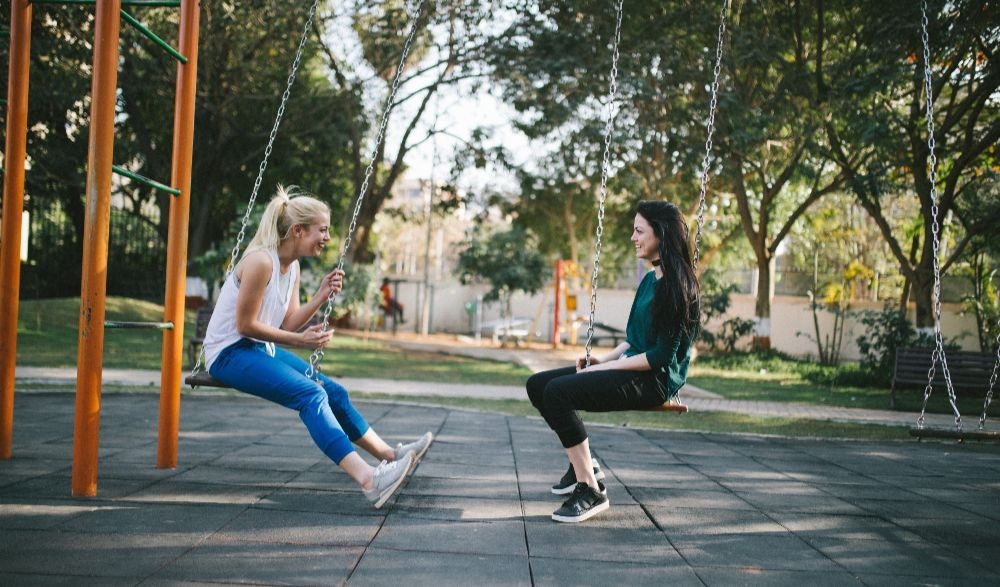Life By Design: 4 Ways To Live Life More Intentionally
 Contributed by
Carolina Herrera
March 22, 2018
Contributed by
Carolina Herrera
March 22, 2018

Living intentionally both in your personal life and career has its benefits.
Have you ever had a conversation like this:
Monday morning coffee with a friend:
She asks: “How was your weekend?”
You say: “It was great, thanks.”
And she says: “Nice, what did you get up to?”
And you say: “Well… hmm… let me think. Err… hmm, I can’t actually remember but I know it was nice!… I think?…”
I’ve had this conversation many times and as soon as I hear myself saying the words “Great, thanks.” I think “Oh no! I have ‘Reactive Life Syndrome’ AGAIN!
Author Jonathan Fields explains ”RLS-Reactive Life Syndrome” to be the result of a life lived in autopilot. A life spent frantically running around ticking off a never-ending to-do list, always reacting but never intentionally deciding what you really want to do.
I remember the day I read about RLS in Jonathan’s manifesto UNBUSY; a beautifully written declaration of purpose which he published on this website, I was nodding along, thinking oh dear! I hope there’s a cure for this.
At the time, I had been going through a really low point in my life. I had eczema all over my body brought on by stress. I had all the types you can imagine and it was awful. Life was just not right.
I knew I had to do something to reconnect with the real me and find the identity I had lost in the midst of my busyness. I had to try and find what lit me up, do more of it and become intentional!
Whilst trying to find ”cures” and in my quest for hope and answers, I came across a few practices I’d now like to share with you.
1. Figure out your values: what’s truly important to you? Find out what drives you, fills you with excitement, and that which you are not willing to compromise on. Knowing this will help you make decisions that are aligned with your authentic self. There are tons of sources to help you figure this out but one simple exercise I came across asked me to do this:
Think about three moments in your life where you felt truly happy. Then think about what these moments have in common? What emotions flood you when you think about these scenarios? The feelings you associate with these moments will give you a good insight into what’s truly important to you.
For instance, my impromptu marriage in Las Vegas was one of those really happy moments. Everything about that day was done in “our way.” So I associated it with a sense of authenticity and freedom–which I’ve realised are my top values.
2. Learn when to say NO, and when to say YES. This is tricky, because there is no set formula. I personally focused on saying NO more to the people who were draining me and bringing me down. Then this left more time to say YES to the people who made me happy.
Scan your relationships. Who are your cheerleaders?
Who are the people that make you smile and treat you right?
Say YES to spending time with them and NO to the soul-sucking ones. There will be a time when you can be there for them, but for now, you’ve got to ”fill your glass” first!
3. Find a way to BE PRESENT. Becoming mindful of your relationships, your surroundings, and your daily choices will give you a clearer picture of how you spend your time. This knowledge will help you take control of how you behave and start making meaningful choices rather than constantly being on autopilot.
Author Jonathan Fields also suggests scheduling reminders in your smart-phone that will become triggers for coming back to the present moment.
For me, hearing the doorbell ring when my son gets home from school is my queue for putting the laptop aside and forgetting about work.
4. Prototype the life you want. This is something I learnt from the Design Your Life course by Bill Burnett and Dave Evans from Stanford University.
For many years I had walked around feeling very proud of my ability to go with the flow. Not realising the flow takes you where the flow wants to go – which is not necessarily where you want to end up.
Now, I’ve learnt that just like designers, we can apply design techniques to our life and create prototypes of the life we desire. We can come up with ideas of what we want and test them out.
For instance, if you’ve always wanted to own a café, rather than mortgaging your house to open one, why not go and work in a café first? Talk to people who own a café and find out if the life they have is the life you aspire to.
As obvious as this sounds, it’s often a missed step.
In a talk at the Chicago Ideas Week Bill and Dave summarise the Design Your Life process as follows: Get curious. Talk to people. And try stuff! They tell us that designing your life is a fluid process; it’s about trying stuff out and seeing what works.
For me, being intentional doesn’t mean you have to plan everything. It means getting clear on what’s important to you, and letting this guide you into becoming the person you really want to be.
—
Tired of doing it all by yourself? #ConnectedWomen helps entrepreneurs find affordable, talented women virtual assistants. Click here to search our database of applicants (FREE for a limited time).
If you’re a jobseeker thinking about transitioning from office based work to online work but don’t know how, please check out our new program called ELEVATE.










Sorry, the comment form is closed at this time.